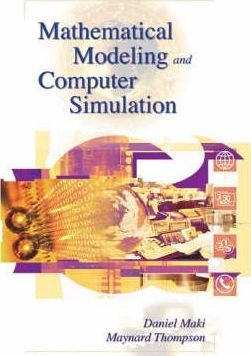1. BASIC PRINCIPLES.
Overview of the Uses of the Term Model.
The Process of Constructing Mathematical Models.
Types of Mathematical Models.
A Classic Example.
Axiom Systems and Models.
Simulation Models.
Practical Aspects of Model Building.
2. MODEL BUILDING: SELECTED CASE STUDIES.
Introduction.
Mendelian Genetics.
Models for Growth Processes.
Social Choice.
Moving Mobile Homes.
A Stratified Population Model.
Simulations Models in Athletics, Marketing, and Population Studies.
Waiting in Line Again!
Estimating Parameters and Testing Hypotheses.
3. MARKOV CHAINS.
Introduction.
The Setting and Some Examples.
Basic Properties of Markov Chains.
Classification of Markov Chains and the Long-Range Behavior of Regular Markov-Chains.
Absorbing Chains and Applications to Ergodic Chains.
4. SIMULATION MODELS.
Introduction.
The Simulation Process.
Generating Values of Discrete Random Variables.
Discrete Event Simulation.
Generating Values of Continuous Random Variables.
Applications and Validation of Simulation Modeling.
5. LINEAR PROGRAMMING MODELS.
Introduction.
Formulation of Linear Programming Problems.
Linear Programming Problems and Duality.
Duality, Sensitivity, and Uncertainty.
An Example of Integer Programming: A Job Assignment Problem.
Networks and Flows.
Appendix A:
Addendum for Students and Teachers on Projects and Presentations.
Introduction.
The Roles of Projects and the Types Useful in Learning Model Buiding
Examples of Projects.
Reports and Presentations.
Evaluating Project Reports.
Sources of Projects.






Reviews
There are no reviews yet.